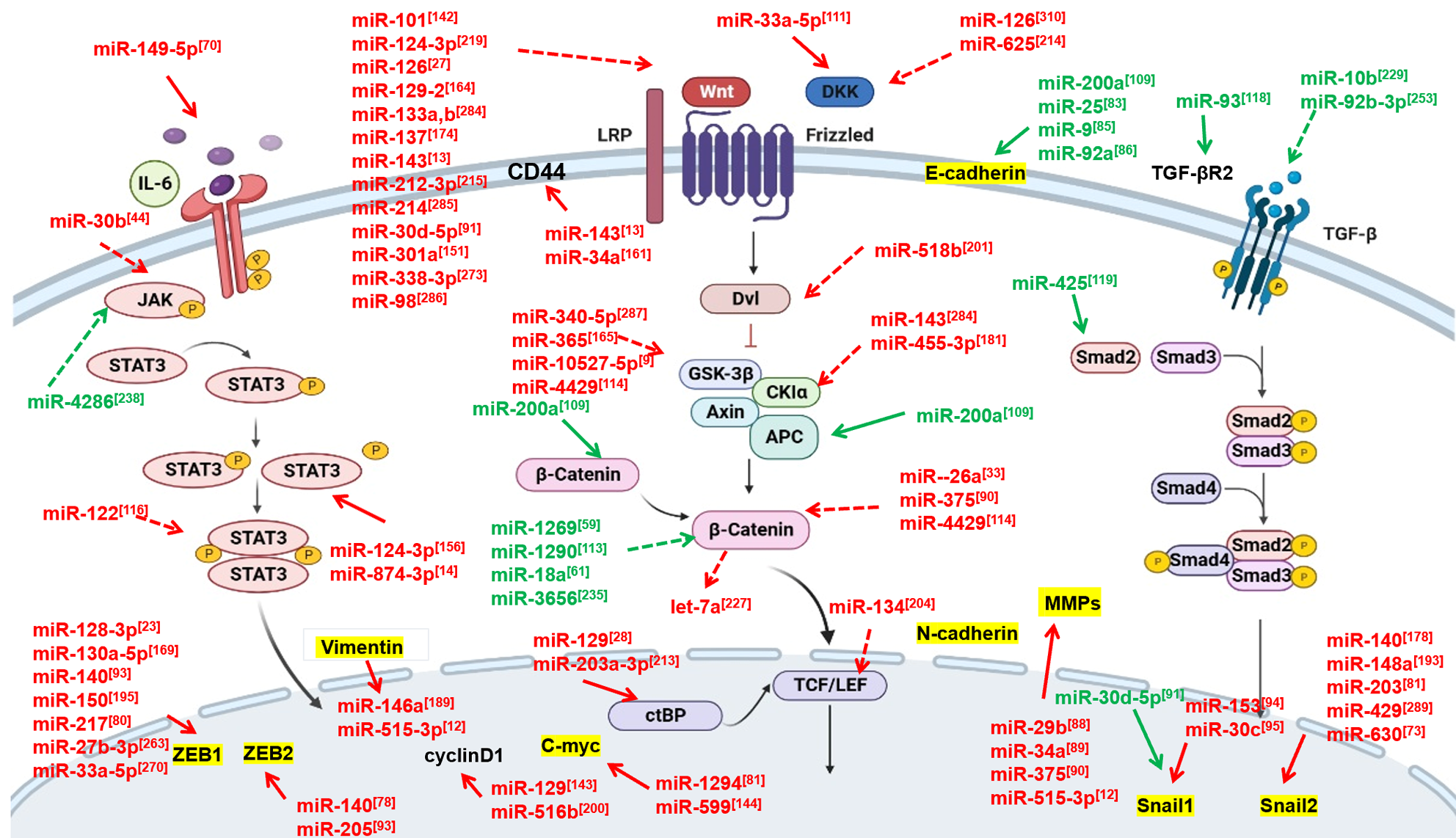Copyright
©The Author(s) 2024.
World J Gastroenterol. Mar 21, 2024; 30(11): 1497-1523
Published online Mar 21, 2024. doi: 10.3748/wjg.v30.i11.1497
Published online Mar 21, 2024. doi: 10.3748/wjg.v30.i11.1497
Figure 2 MicroRNAs targeting the pathways of Wnt/β-catenin, IL6/Stat3, and TGF-β in esophageal squamous cell carcinoma metastasis.
In esophageal squamous cell carcinoma (ESCC), miRNAs serve as crucial effector to Wnt/β-catenin, IL-6/STAT3 and TGF-β signalings, which is consistently involved in cancer metastasis[9,12,14,23,27,28,33,44,59,61,70,73,78,80,81,83,85,86,88-91,93-95,109,111,113,114,116,118,119,142-144,151,156,161,164,165,169,174,178,181,189,193,195,200,201,204,209,211,215,219,227,229,235,238,253,263,270,273,284-287,289,310]. Wnt/β-catenin signaling includs Wnts, receptors (such as Frizzled, FZD and low-density lipoprotein receptor-related proteins, LRP), Dishevelled (Dsh/Dvl), β-catenin, glycogen synthase kinase 3β (GSK-3β), Axin, APC (adenomatous polyposis coli), IL-6 is known to activate the downstream JAK/STAT3 signaling, and canonical TGF-β pathway is mediated by SMAD2, SMAD3, and SMAD4. ZEB1/2, Snail1/2, E-cadherin, N-cadherin, C-myc, Vimentin and MMPs are specific target and key factors for ESCC metastasis. “Green” and “Red” indicated oncomiRs and tumor-suppressive miRNAs, respectively. The dashed arrow and solid arrow indicated direct targeting effect and indirect targeting effect, respectively.
- Citation: Wei QY, Jin F, Wang ZY, Li BJ, Cao WB, Sun ZY, Mo SJ. MicroRNAs: A novel signature in the metastasis of esophageal squamous cell carcinoma. World J Gastroenterol 2024; 30(11): 1497-1523
- URL: https://www.wjgnet.com/1007-9327/full/v30/i11/1497.htm
- DOI: https://dx.doi.org/10.3748/wjg.v30.i11.1497









